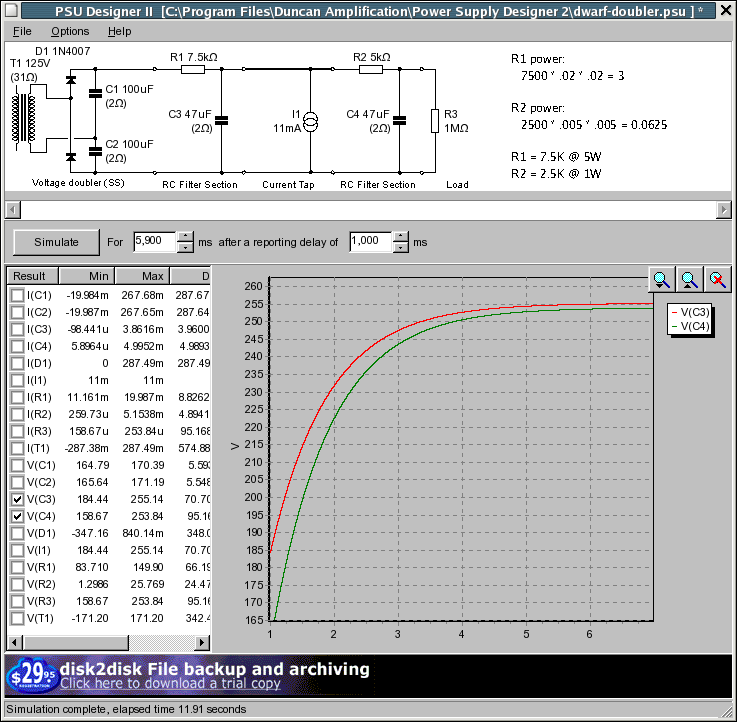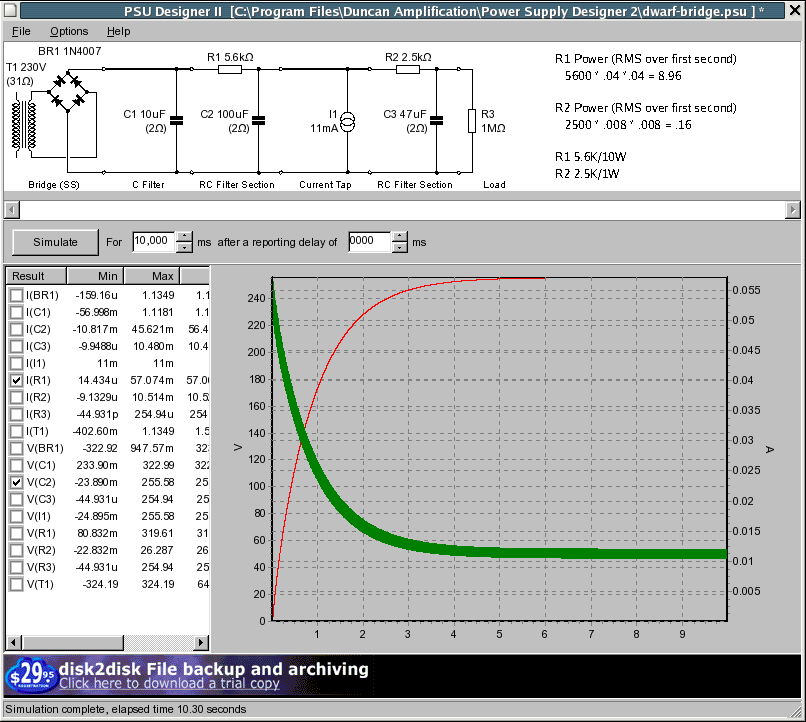milliAmp - Single 12DW7 Amplifier
Inspiration for milliAmp started with the following AX84 thread in which
Chris Hurley asked if anyone wanted weigh in
on a new beginner project. Chris's query generated a bunch of
suggestions and comments. As the discussion emerged, the following
criteria began to surface:
Chris proposed that
it be simple to build and suggested a single-tube project.
It needed to be relatively low-cost. Pain Devine suggested that he'd like
to see tube and transformers come in around $20 US. That would make the entry
barrier for beginners much more acceptable. Chris and Jamie Anderson, both
elaborated on this requirement.
A number of folks mentioned Bob Stewart's single-tube Spud as a good
example of the level of complexity folks had in mind. Brian was the first to
recall this amp and later dug up the BOM for the
build.
Dean Owens was the first to mention the 12DW7 and
noted that JJ was currently producing that tube, so we wouldn't have to rely
on surplus supplies.
There was a lot of discussion about double duty with Luap, Regan and Phil Rowley all
mentioning the need for a Herzog jack after the output transformer.
At some point during the discussion, I started studying the curves of the
12DW7 began playing around with load lines. That lead to my Single 12DW7 Proposal.
Basically, I tried to incorporate the ideas that folks on the board had
expressed. The design is relatively simple: using triode 1 of the 12DW7 in
as high-gain a stage as practical, I drive the second triode on a
deliberately steep 5K load-line. This steep
load-line effectively narrows the input signal swing that the second triode
can take before the onset of clipping. I've also asymmetrically
biased the output stage at -2.5 volts to futher limit the voltage swing
necessary before clipping. These are values that we may need to adjust
in the prototype.
Many of you contributed other ideas that didn't directly end up in the
design but influenced my thinking. Therefore, I'd like to thank and
recognize all of you thread participants for your contributions to this
circuit. Frankly, I am indebted to all of the participants on
www.ax84.com for suggesting ideas or
teaching me where to fish in the sea of tube amp design lore.
Schematic |

|
There was much discussion of whether to have any controls on this amp at all
beyond the Herzog line-level control. Eventually, I settled on a
design with a gain control between the two stages. I've also designed
several variations that include tone controls and one that eliminates
the gain control. You can see these variations on page two of the PDF
schematic file. They include:
- Garnet Style Tone Control
- This was the original tone control that I envisioned for this. Thanks
goes to Paul for pointing out the errors in my first schematic.
Acknowledgments go to Adam Alpern for documenting the Garnet
tone control.
- 18-Watt Lite II Tone Control
- A few folks mentioned using the tone control from the 18-Watt Lite II
design, so we've got an example of that. I liberally lifted this from
the circuit variations over on the www.18watt.com site
- Active Baxandall
- This is probably the least useful of the I include it because I'm
thinking about trying it. I've been fascinated with PJ's design ever
since I read about it. I figure milliAmp is good test bed for things
like this. I first saw this discussed in the following article found
on Randall Aiken's site: The
Anode Follower (PDF).
- No Knobs
- For those of you who want maximum gain or a stompbox approach, this
would have only the line-level control. This is the simplest
approach.
Additionally, I wanted this amp to serve as a stepping stone to the
P1. In keeping with that desire, I've designed an alternate power
supply that uses the Hammond 269EX power transformer. One could start
with a P1 or HO transformer and a chassis punched for either, but build
the milliAmp as a starter. Frankly, I'm not sure how much easier it
would be to build the milliAmp than it would be to build a P1, but the
several expressed a desire to be able to follow such a build
progression. Besides the 269EX power supply, I've also included a
schematic of supply that I'm building into the prototype. This last
one is primarily for reference; I doubt many people are sitting on a
Triad R-29A power transformer that they'd like to use.
|
Feel free to build an amp from any of these schematics, but do so are
your own risk and please take appropriate safety measures. The power
supply in this design is sufficiently powerful to kill the careless
builder. For safety guidelines consider the following document: Tube amp building and use
safety. at Drifter Amps. Be forewarned, however, that no amount of
documentation can protect you if it isn't properly applied.
Bill of Materials: milliAmp with Line-Level Control
Pain Devine has published bills of materials for the milliAmp sourcing the
transformers, tube and miscellaneous hardware from Antique Electronics
and the other components from Mouser. He's got the price down in the
$75 range. You can see those documents here:
I also constructed a bill-of-materials for the
simplest of these, sourcing all parts from Antique Electronic Supply. Pain's
is a better list and with his permission, I'm going to make a few
refinements, tie in the part numbers from the schematic and incorporate
it into mine. But that will have to wait until I have some more
time.
Power Supply Notes
Note these PSUD files are little out of date. With the
bias changes and such, milliAmp now draws closer to 16 mA, so the
dropping resistors and the loads need to be adjusted accordingly. I'll
do that sometime soon.
The power supply for all of these relies on a relatively inexpensive power
transformer from AES. Because it's secondary voltage is only 115 volts, I
elected to use a voltage doubler. Arguably, I could have used a bridge
rectifier and let the voltage run a bit lower. I decided I want to run the
first triode with a relatively high plate voltage (and corresponding preamp
gain) in the hopes that we might be able to gets some clipping out of the
power stage. Prototyping it up will tell whether this approach has
merit. The 250-255 volts on the plate of power stage stage is about as high
a voltage I can reasonably go with the 5K load line and still keep the power
dissipation within the design maximum limits.
For the initial prototype, I have on hand a 230 volt transformer that I'm
going to use. So I've also designed a power supply version around that
unit. Ultimately, I or someone will have to build the doubler version to
test it out. At the outset, however, I'm going to limit my cost and use as
many parts on hand as possible. After all this design might not work out as
expected.
For those of you who like to tinker with Duncan's Power Supply Designer, you
can click on the links below to download the PSUD net lists:
The doubler supply:

The bridge supply:



